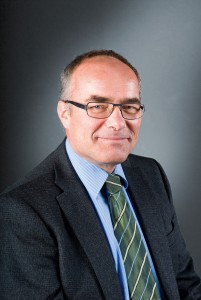
(Chief Editor Mining Report Glückauf)
Editorial
The member states of the European Union, and Germany is no exception here, are highly dependent on imports of
raw materials. The partnership agree-ments that the German Federal Republic has concluded in recent years with potential supplier countries in the raw-materials sector demonstrate this all too clearly. When deciding which supplier countries to choose one of the key factors is sustainability, namely the social and environmental impact and the economic viability of the mineral extraction process. In this connection alternative methods of energy and raw-materials production have been gaining increasing importance alongside the normal techniques that have been traditionally part of the mining industry.
While during the second half of the last century the industry’s focus was on the mechanisation and then on the automation of individual workplaces and production units below ground, today the talk is much more about introducing automatic technology mine-wide. This requires a series of innovative approaches at all levels. The present edition of Mining Report examines the use of sensors for registering the composition of material flows, how suitable hydraulic fluids and pick holders for cutting tools can have a real impact on winning efficiency, and a somewhat unusual mining process, namely the underground mining of limestone blocks. The introduction of fully automated systems as part of a sustainable mining industry is a many-layered and highly complex theme and yet this is precisely the approach that we need to take if we are to meet the challenges that lie ahead – mining in the deep oceans and even on other planets.
The European Union’s Horizon 2020 programme is aimed at supporting the development of sustainable methods for extracting raw materials from European deposits. One such example is the BIOMOre Project that seeks to test the feasibility of in-situ leaching and bioleaching processes for the mining of deep ore deposits.
Mineral processing residues are normally stored on spoil tips. While environmental and safety-related factors now justify the reclamation of this waste material, simple economic aspects are also providing the motivation for operations of this kind, as demonstrated by the SecMinStratEl Project that Freiberg Mining Academy is carrying out along with other partners at a tailings impoundment in Chile.
The reclamation process known as “urban mining” also includes landfill mining projects that, under appropriate conditions, can produce gas for use as an energy source.
This subject area is rounded off with articles that focus on export financing and the use of synergies for improving workplace safety, the latter under the heading of ISSA Mining.
With my best regards
Dipl.-Ing. Andreas-Peter Sitte
Chief Editor Mining Report Glückauf, Essen